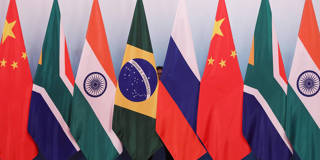A BRICS Revival?
Economic headwinds and internal disagreements have long stymied the BRICS’ ambition to become a global diplomatic and financial force capable of challenging Western-led international institutions. Is this finally changing?

Economic headwinds and internal disagreements have long stymied the BRICS’ ambition to become a global diplomatic and financial force capable of challenging Western-led international institutions. Is this finally changing?
WASHINGTON, DC – There was a time when everyone was talking about a group of fast-growing emerging economies with huge potential. But the BRICS – Brazil, Russia, India, China, and South Africa – struggled to transform themselves from a promising asset class into a unified real-world diplomatic and financial player. Is this finally changing?